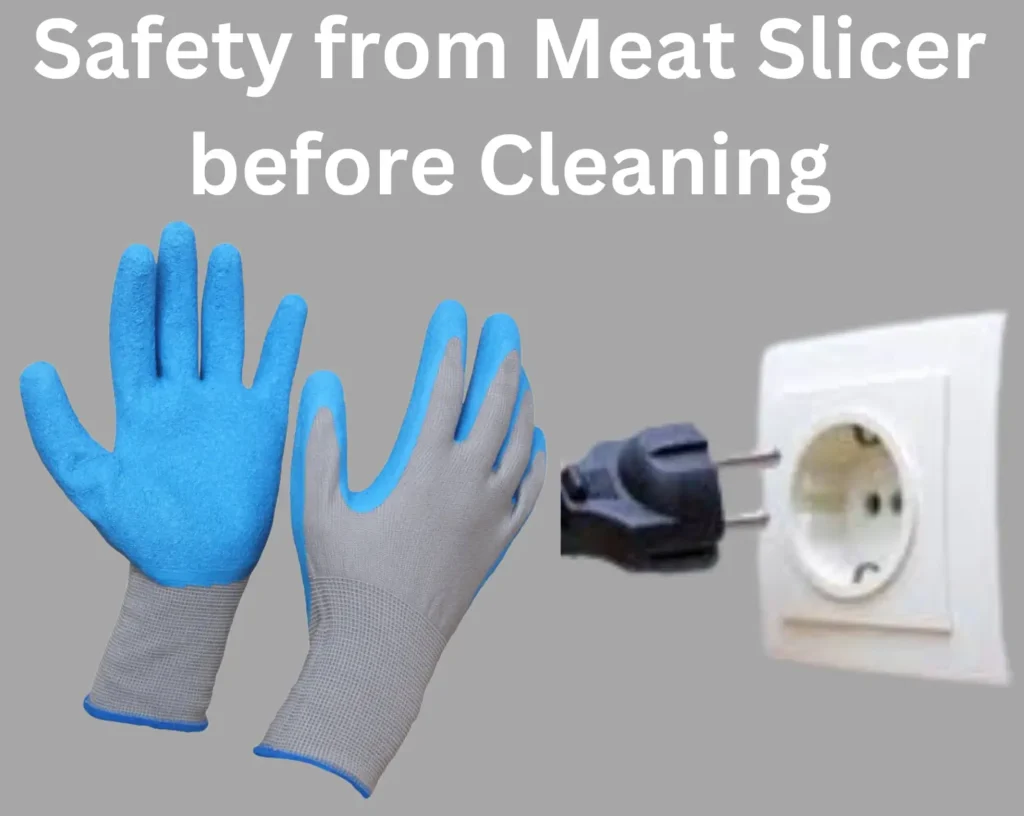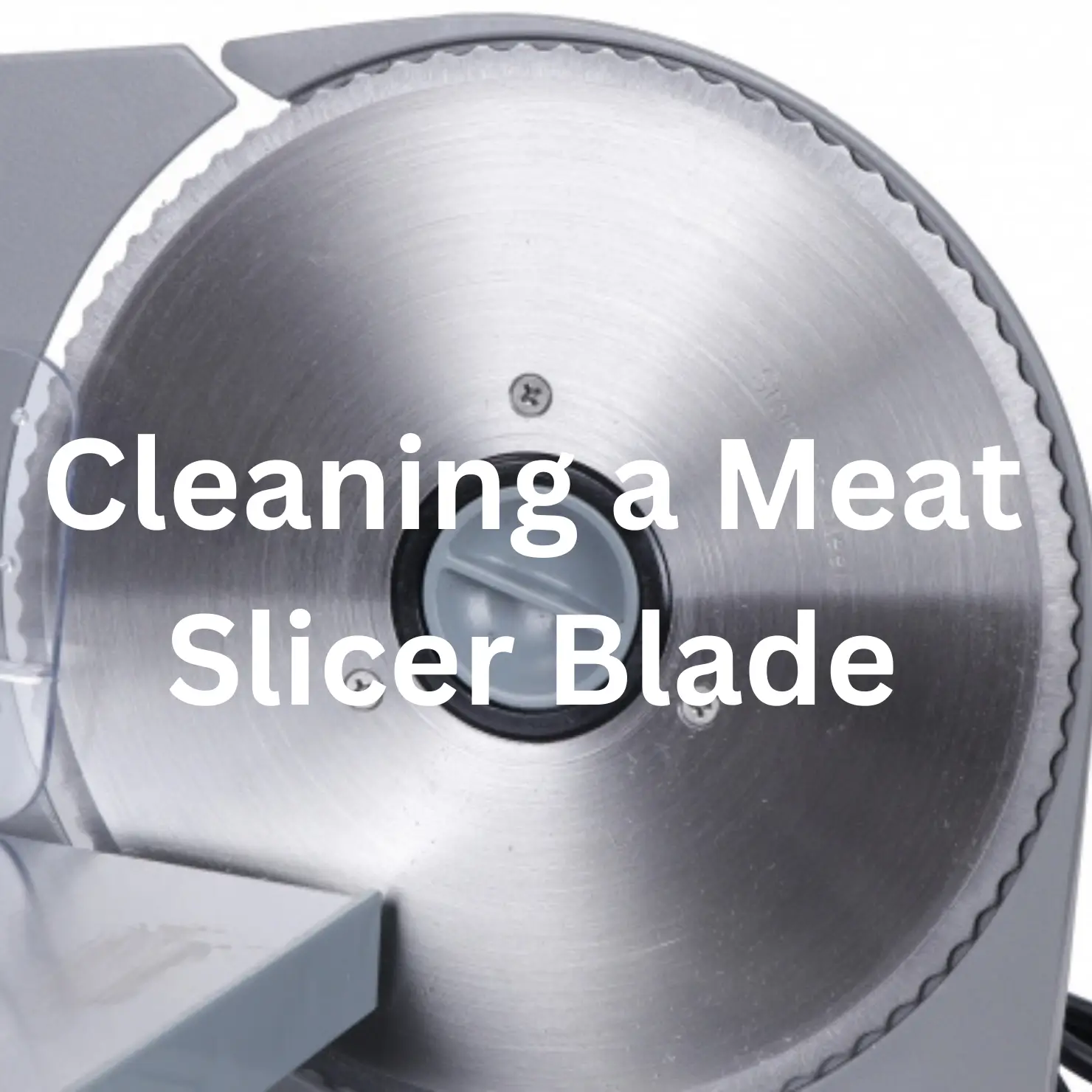Maintaining hygiene in a commercial kitchen is paramount for the safety of both customers and staff. One essential piece of equipment that requires regular cleaning is the meat slicer.
The Hobart 410 meat slicer, a popular choice in many professional kitchens, demands proper cleaning to ensure food safety standards are met.
How to Properly Clean a Hobart 410 Meat Slicer? In this guide, we will delve into the step-by-step process of cleaning and maintaining a Hobart 410 slicer to keep it in optimal condition and prevent cross-contamination.
Preparation of Hobart Slicing Machines:
Before diving into the cleaning process, it’s crucial to gather all necessary supplies. Here’s what you’ll need:
- Disposable gloves
- Cleaning brushes
- Mild detergent or cleaner
- Sanitizer solution
- Clean towels or cloths
- Food-grade lubricant
- Screwdriver (if required for disassembly)
Safety Precautions of Meat Slicer:

Always prioritize safety when cleaning any kitchen equipment.
Ensure the slicer is unplugged from the power source to avoid any accidental starts.
Additionally, wearing protective gloves is recommended to protect your hands from sharp blades and cleaning chemicals.
Disassembly Hobart Meat Slicer:
Begin by carefully disassembling the various components of the meat slicer.
Refer to the manufacturer’s manual for guidance on disassembly, as the process may vary slightly depending on the Hobart model 410.
Typically, the Hobart 410 meat slicer can be disassembled by removing the blade, carriage, and any removable parts.
Cleaning a Hobart Meat Slicer Blade:

The blade is the most critical component of the meat slicer, as it comes into direct contact with the food being sliced.
Start by wiping the blade with a damp separate cloth or clean to remove any food residue or debris.
Next, apply a mild detergent or cleaner to thoroughly clean the blade, ensuring all surfaces are scrubbed gently to remove any stubborn stains.
Use a dedicated cleaning brush to reach tight spaces and crevices on the blade. Rinse the blade with clean water and dry it thoroughly with a clean towel.
Cleaning the Carriage and Components:
After cleaning the blade, focus on the carriage and other removable components such as the food pusher, slicing thickness knob, and product tray.
Wash these parts with warm, soapy water and scrub them thoroughly to remove any food particles or grease buildup.
Use a cloth or soft-bristle brush to clean hard-to-reach areas, and rinse the components with warm water to wash.
Sanitization:
Once all components are clean, it’s essential to sanitize the meat slicer to eliminate any bacteria or pathogens.
Prepare a sanitizing solution according to the manufacturer’s instructions or use a commercial sanitizer suitable for food contact surfaces.
Apply the sanitizer to all cleaned surfaces, ensuring complete coverage. Allow the sanitizer to sit for the recommended contact time to effectively kill any remaining bacteria.
Finally, rinse the slicer with clean water to remove any traces of the sanitizer.
Drying and Reassembly Hobart Slicer:
After sanitizing, thoroughly dry all components of the meat slicer using a clean cloth or towel.
Pay special attention to areas where water may accumulate, such as crevices and joints.
Once dry, reassemble the slicer carefully, ensuring all parts are correctly positioned and secured.
Lubricate your Slicer:
To maintain smooth operation and prevent corrosion, it’s essential to lubricate moving parts of the meat slicer.
Apply a food-grade lubricant to the blade, carriage, and any other moving components as recommended by the manufacturer.
This will help extend the lifespan of the slicer and ensure consistent performance.
Final Inspection:
Before putting the meat slicer back into service, conduct a final inspection to ensure everything is clean, dry, and properly assembled. Check for any signs of damage or wear that may require further maintenance or replacement.
Regular Maintenance:
Cleaning an old Hobart 410 meat slicer is not a one-time task but rather an ongoing process. Establish a regular cleaning schedule to prevent the buildup of food residue and bacteria.
Daily cleaning is recommended for high-volume operations, while weekly or monthly cleaning may suffice for lower-volume kitchens.
Additionally, inspect the slicer regularly for any signs of wear or damage and address any issues promptly to prevent safety hazards and ensure optimal performance.
Conclusion of How to Properly Clean a Hobart 410 Meat Slicer :
Proper cleaning and maintenance of a Hobart 410 meat slicer are essential for food safety and equipment longevity in commercial kitchens.
By following the step-by-step guide outlined above, kitchen staff can ensure that their meat slicer remains in optimal condition, minimizing the risk of cross-contamination and ensuring the delivery of safe, high-quality food to customers.
Regular cleaning, sanitization, and lubrication are key practices that should be incorporated into the routine maintenance of this essential kitchen equipment.
Frequently Asked Questions About How to Properly Clean a Hobart 410 Meat Slicer
Why is it important to clean a Hobart 410 meat slicer regularly?
Regular cleaning of a Hobart 410 meat slicer is crucial for maintaining food safety standards and preventing cross-contamination. Food residue and bacteria can accumulate on the slicer’s components, posing health risks to consumers if not properly cleaned.
How should I clean the Hobart 410 meat slicer?
The frequency of cleaning depends on the volume of usage. For high-volume kitchens, it’s recommended to clean the slicer daily to prevent the buildup of food residue and bacteria. Lower-volume kitchens may opt for weekly or monthly cleaning schedules.
Can I use any cleaning products on the meat slicer?
It’s essential to use cleaning products that are safe for food contact surfaces. Mild detergents or cleaners are generally suitable for cleaning the slicer’s components. Additionally, using a commercial sanitizer approved for food contact surfaces is necessary to ensure thorough sanitization.
Do I need to disassemble the meat slicer for cleaning?
Yes, disassembling the meat slicer is necessary to clean all its components thoroughly. This allows you to access hard-to-reach areas where food residue and bacteria may accumulate. Refer to the manufacturer’s manual for guidance on proper disassembly and reassembly procedures.
How should I lubricate the meat slicer?
It’s important to use a food-grade lubricant suitable for lubricating moving parts of the meat slicer. Apply the lubricant sparingly to the blade, carriage, and any other moving components to ensure smooth operation and prevent corrosion.
What should I do if I notice signs of damage or wear on the meat slicer?
If you notice any signs of damage or wear during the cleaning process, it’s important to address them promptly. Damaged or worn components may affect the slicer’s performance and pose safety hazards. Consult the manufacturer’s manual or a qualified technician for repair or replacement options.
Can I use water to clean the blade of the meat slicer?
Yes, you can use water easily to clean the blade of the meat slicer, but it’s essential to dry it thoroughly afterward to prevent rusting. Additionally, using a mild detergent or cleaner can help remove stubborn stains and food residue more effectively.
